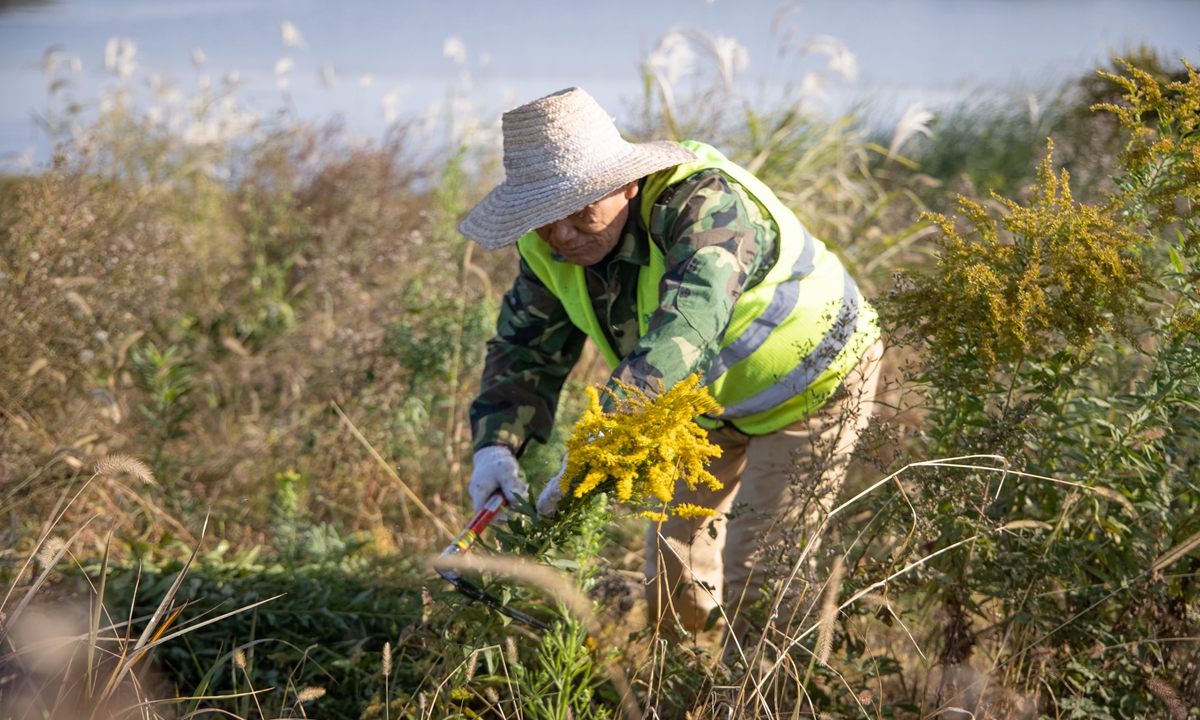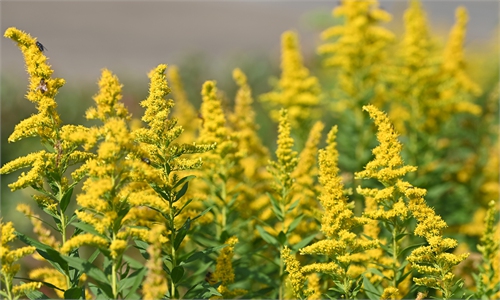‘Ecological killer’ plant found again in SW China, expert calls to raise public awareness

A man wiping out Solidago Canadensis in Wuhan, Central China's Hubei Province. Photo: VCG
The "ecological killer" Solidago Canadensis - also known as the Canadian goldenrod - was once again found in Chengdu, Southwest China's Sichuan Province, only a few days after they were wiped out in the region, a local expert confirmed with the Global Times on Monday.
The invasive plants are notorious for threatening their local counterparts. Due to the Canadian goldenrod's strong reproductive capacity and allelopathic effect on local native plants, it breaks down a stable ecosystem and poses huge threats to local ecosystems, Hou Kai, associate professor, Sichuan Agricultural University told the Global Times on Monday, noting that the local agricultural departments had wiped it out previously.
The species was introduced in the 1930s to China as an ornamental plant. It has led to the elimination of over 30 local species in Shanghai alone, according to media reports.
Over 660 invasive alien species have been found in China, including 71 that have caused threats or potentially will threaten natural ecosystems, according to the most recent news about China's environmental conditions in 2020.
There are several possible channels leading to the invasive species that are being found in China. They could have invaded through nature, such as airflow, water flow or natural migration through plant seeds or animal larvae. Also, human activities have an increasing impact on their invasion.
In order to prevent more invasive species, "public education is needed," Hou said.
The related departments should strengthen the quarantine for imported species, as some invasive species were found in nursery-grown plants or other carriers, Hou said.
Some species are introduced intentionally for the purpose of ornaments, such as Eichhornia crassipes, also named water hyacinth. The related authorities should strengthen their management over these kinds of plants in case they escape or invade other regions, according to Hou.
China has released four batches of lists with invasive species including water hyacinth, Spartina alterniflora and Mikania micrantha. "It is important to educate people about which species are harmful for China's ecological environment, so the release of the lists is very necessary," Hou said.
For those species with worse impacts, the public needs to be aware of the significance to report to the related departments immediately after they find them, Hou said, noting that more research is needed to explore the impact of these invasive species on local ecology and the livelihood of local residents, and scientific and reasonable technology will be used to manage those invasive species.


